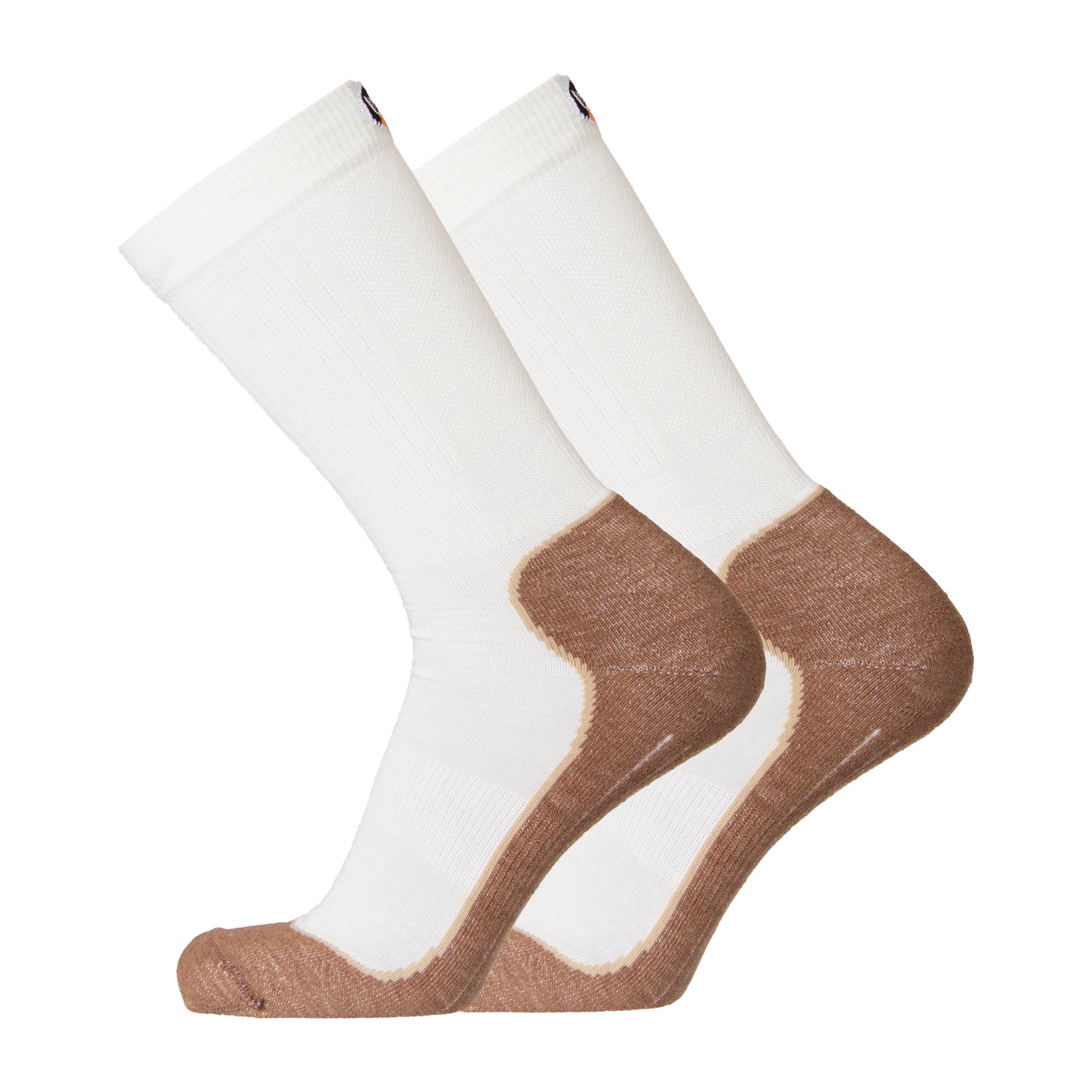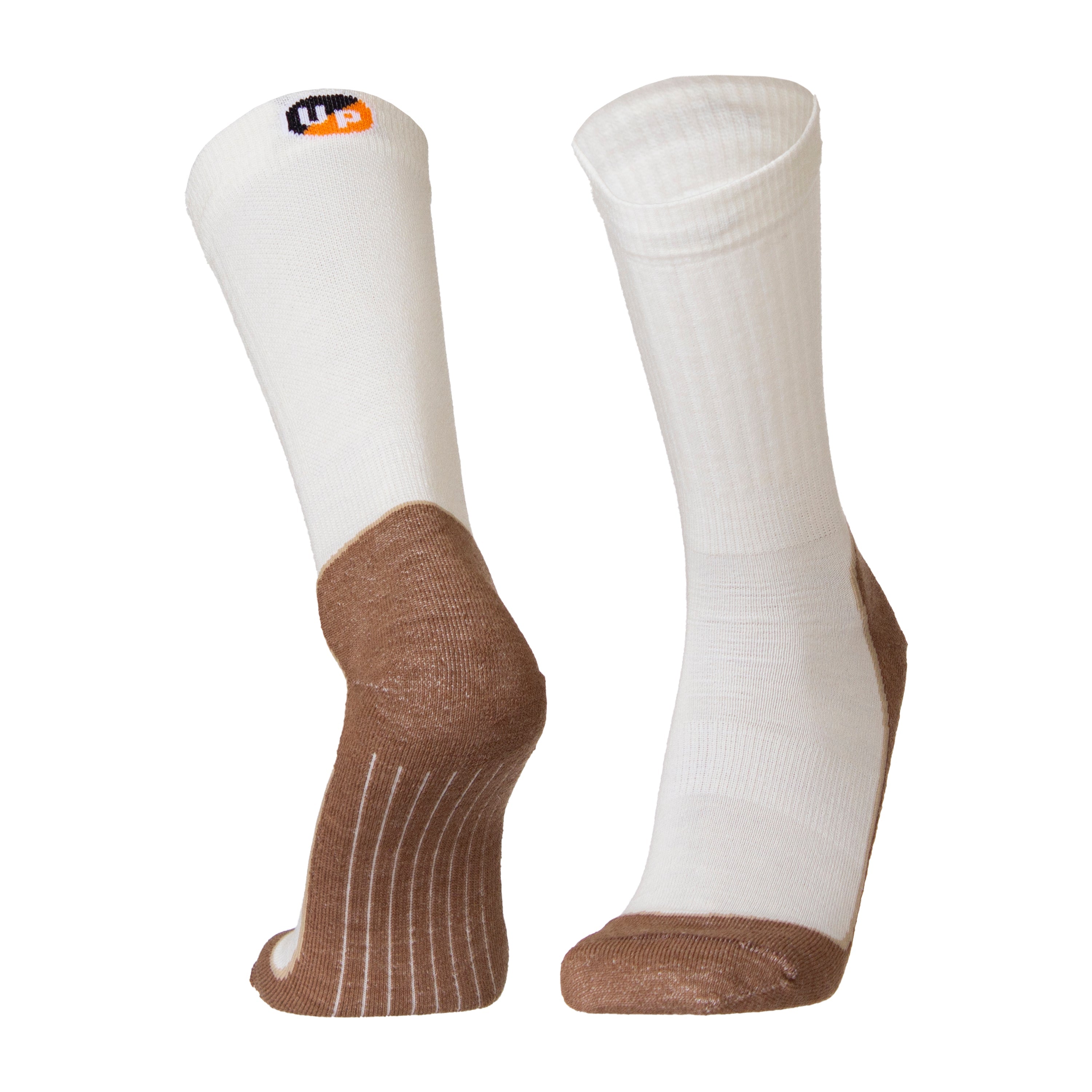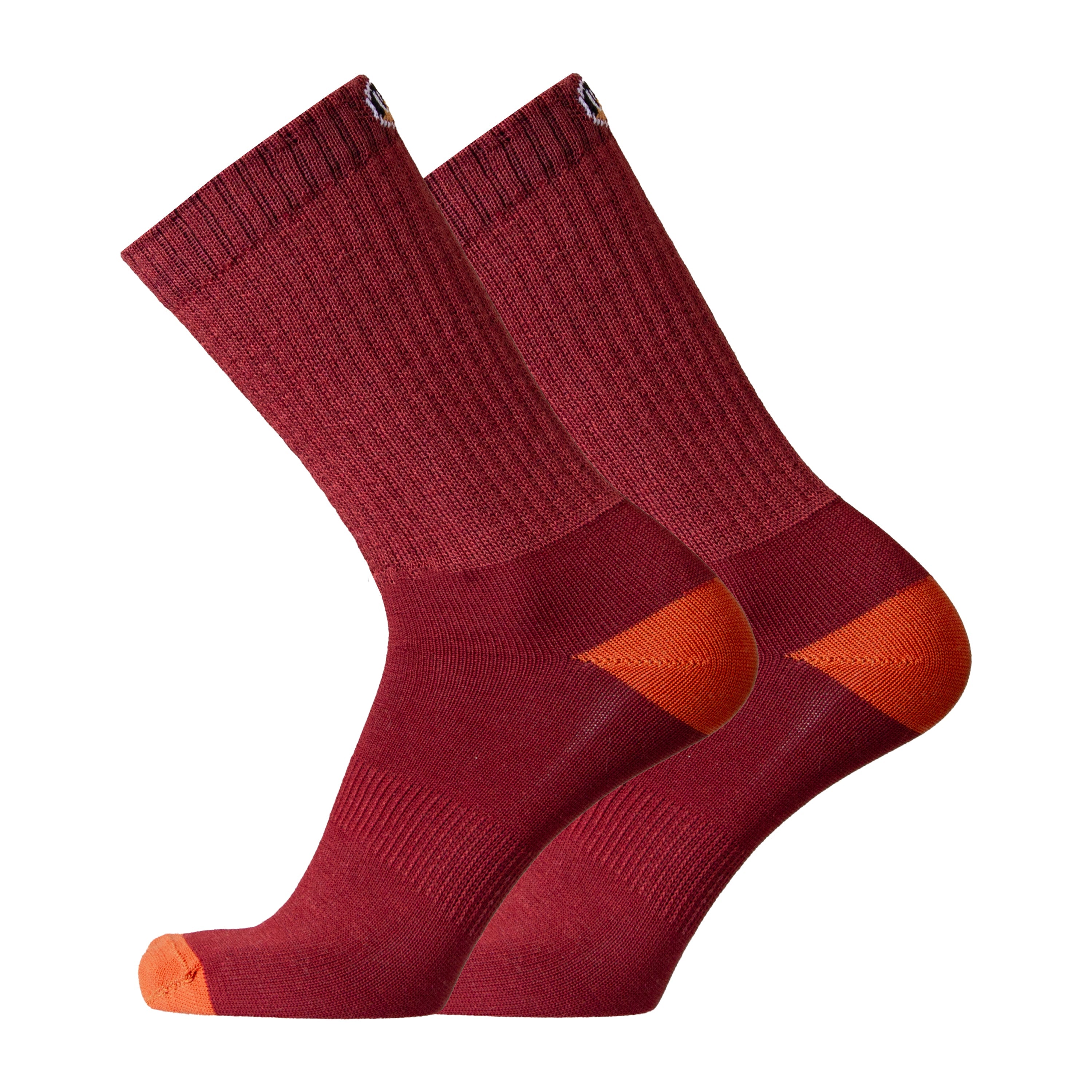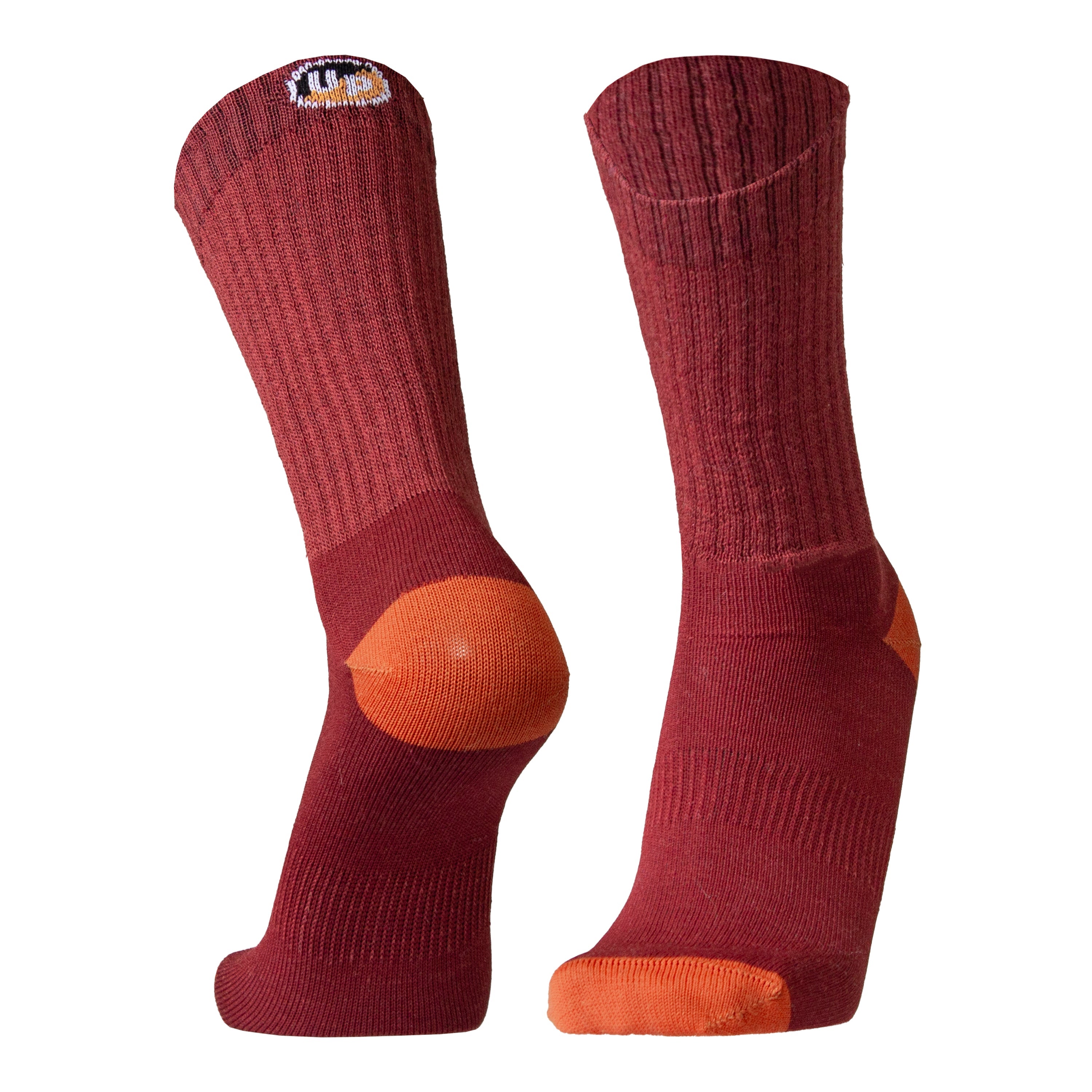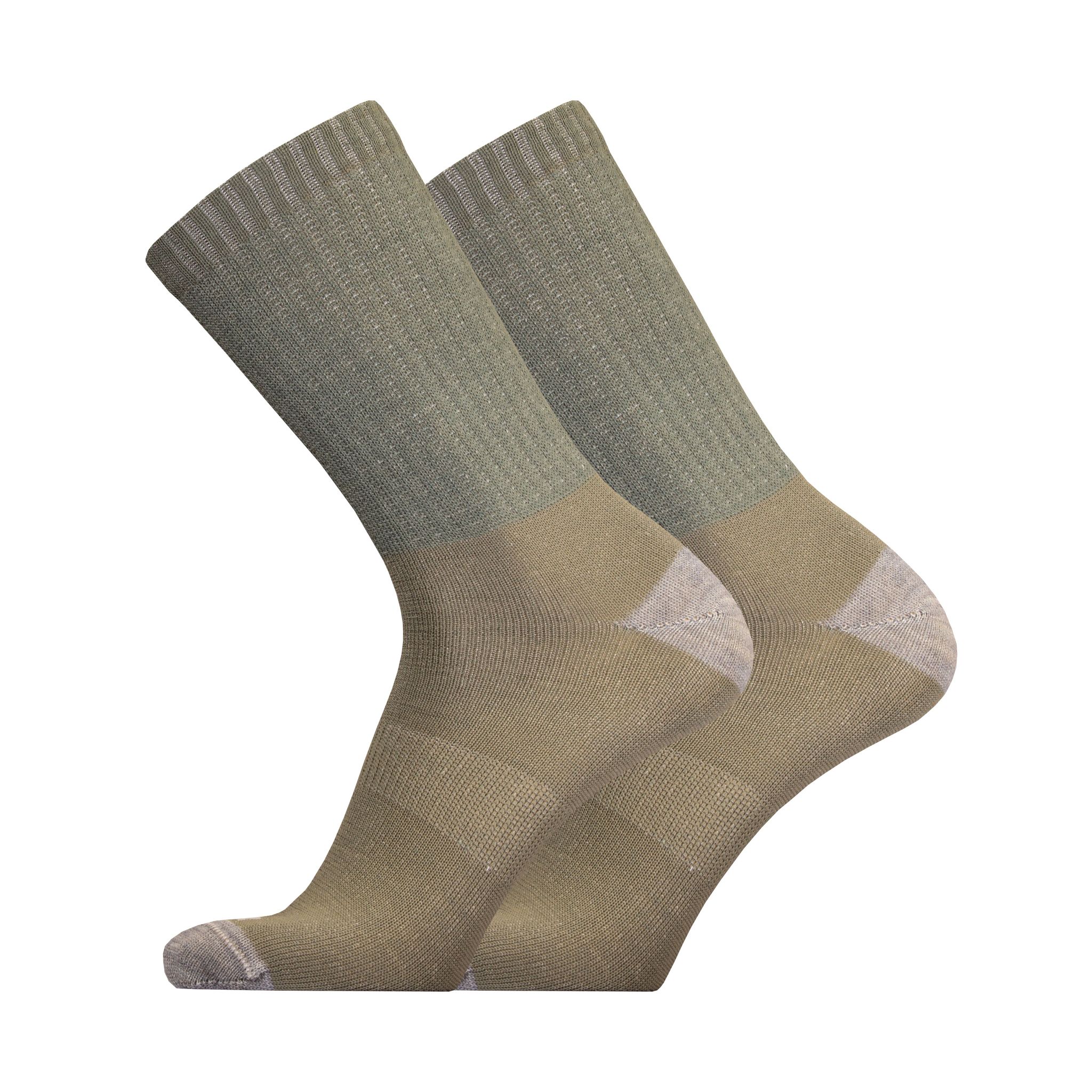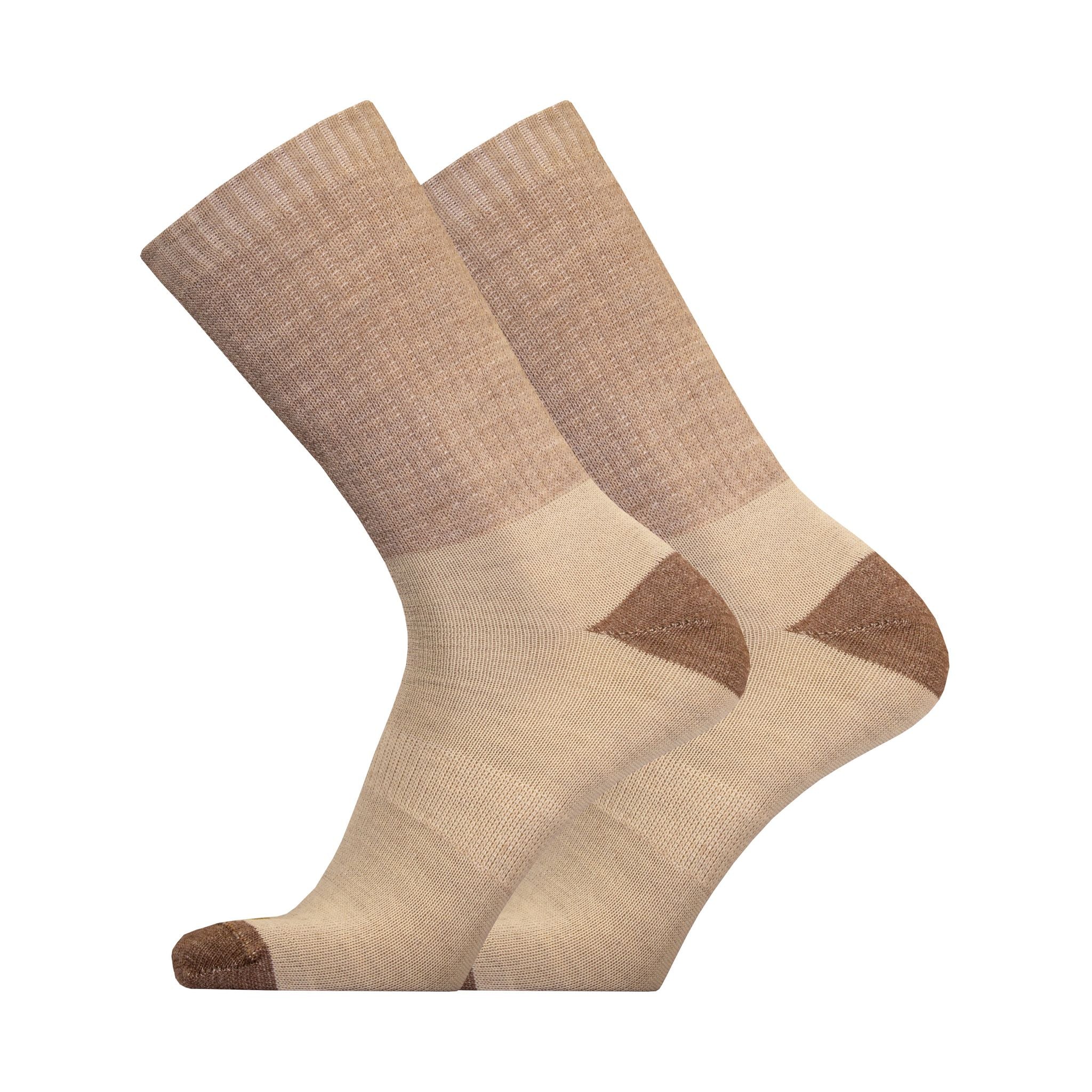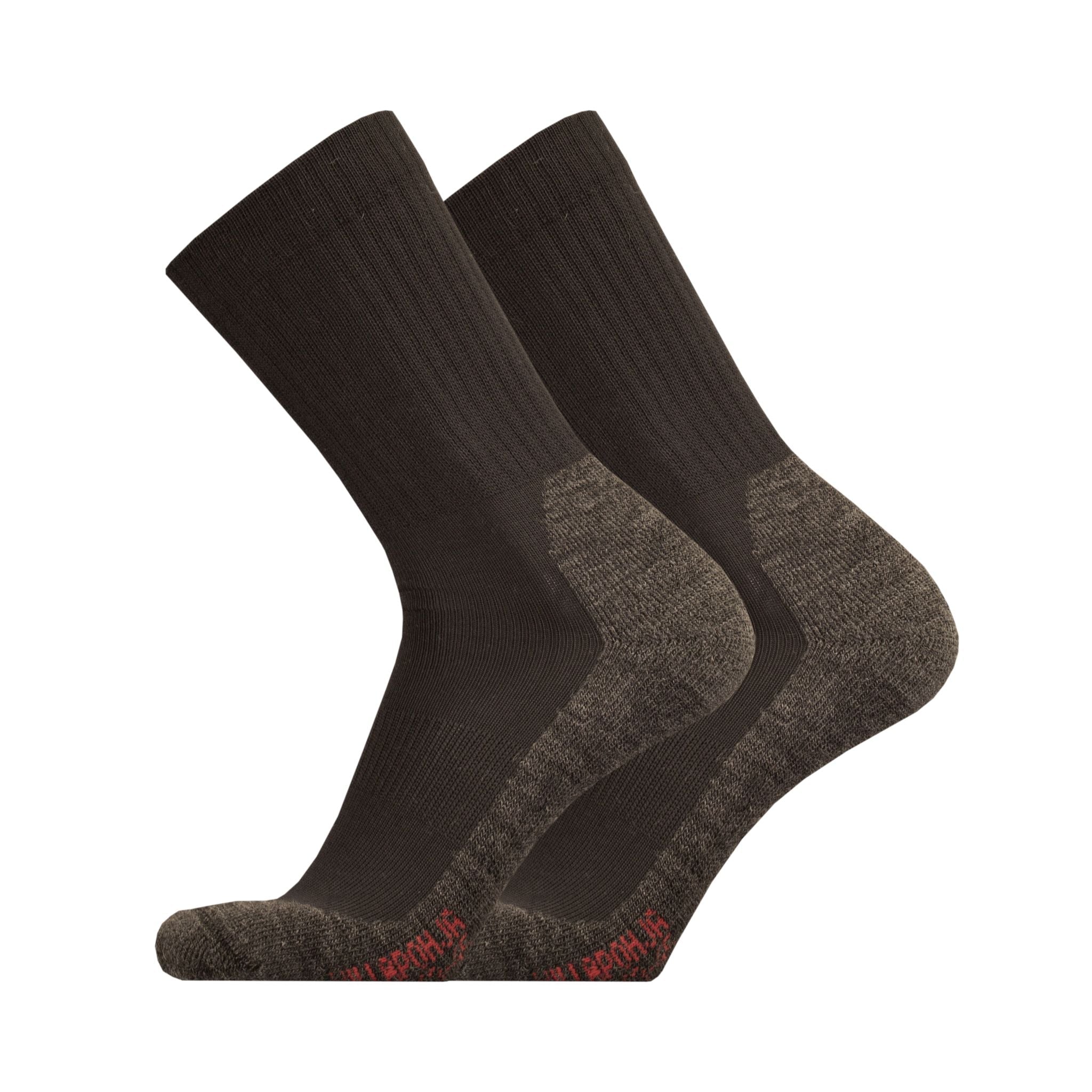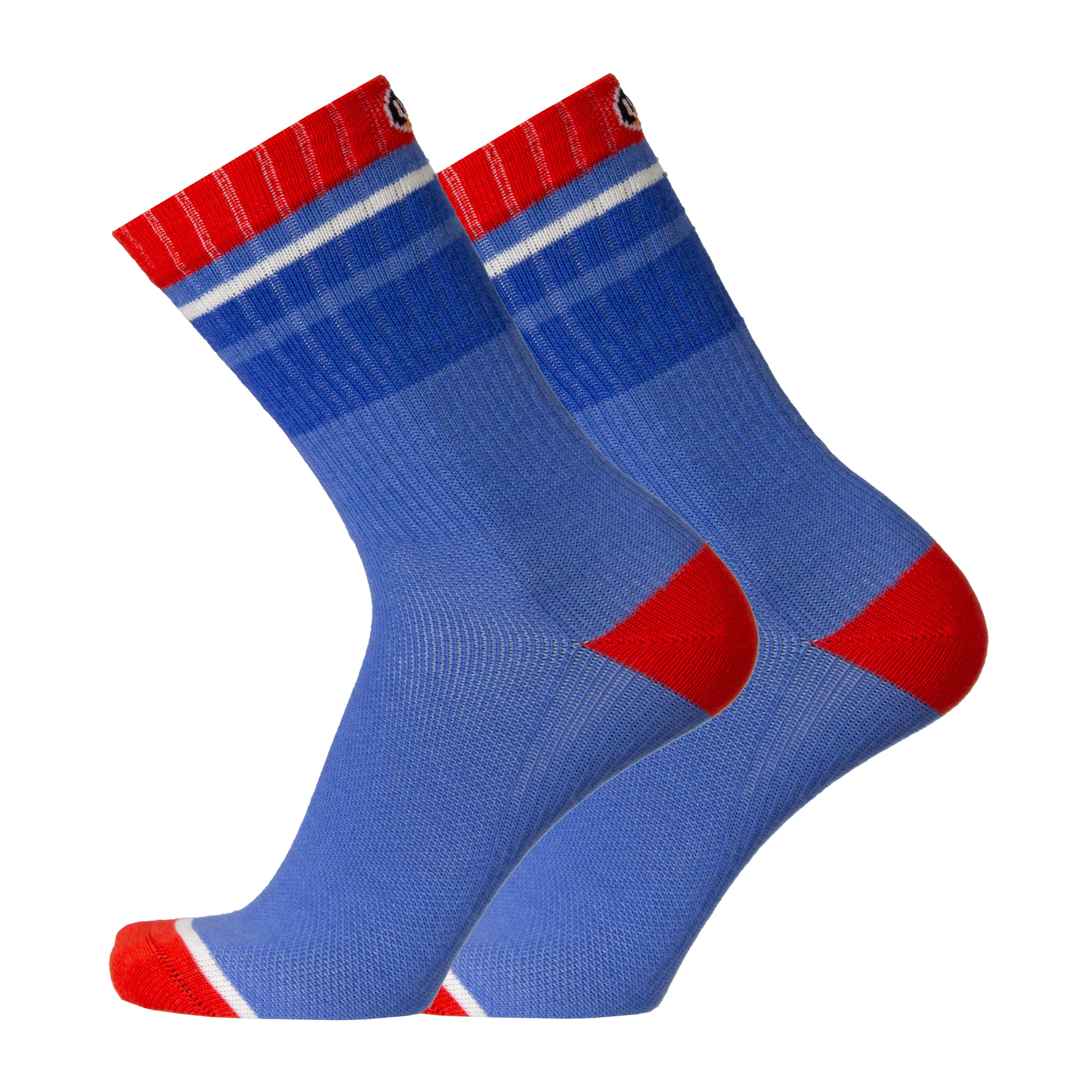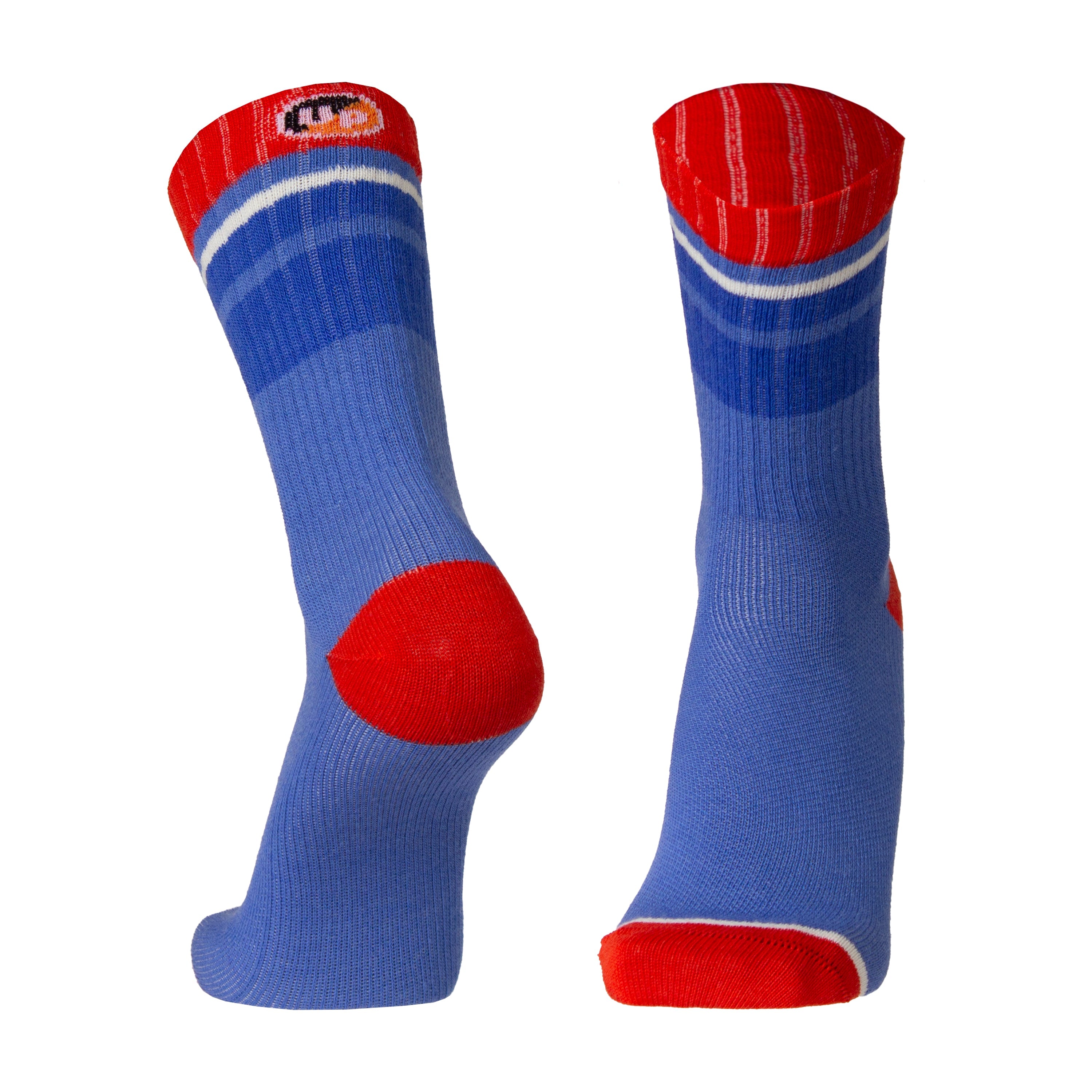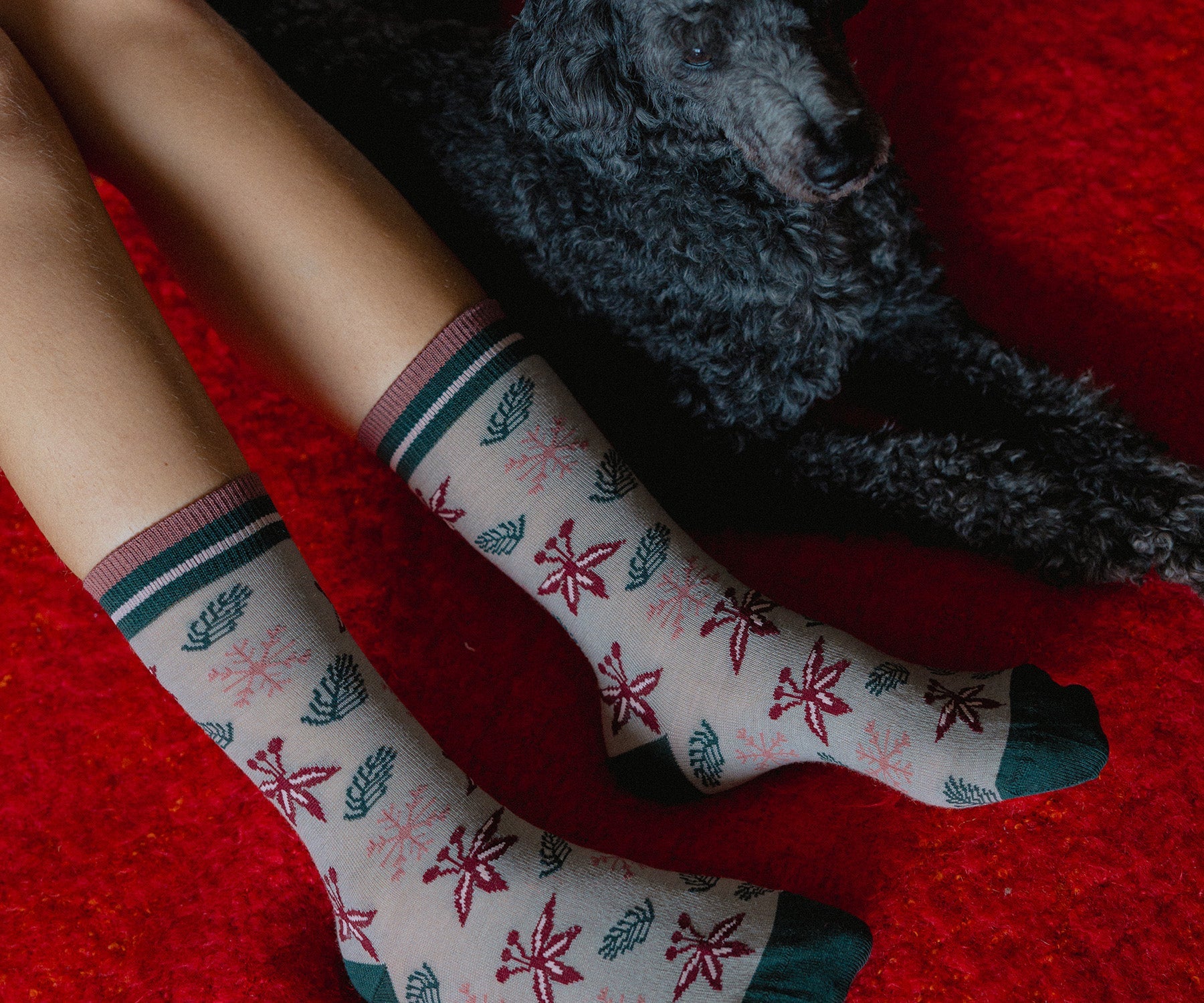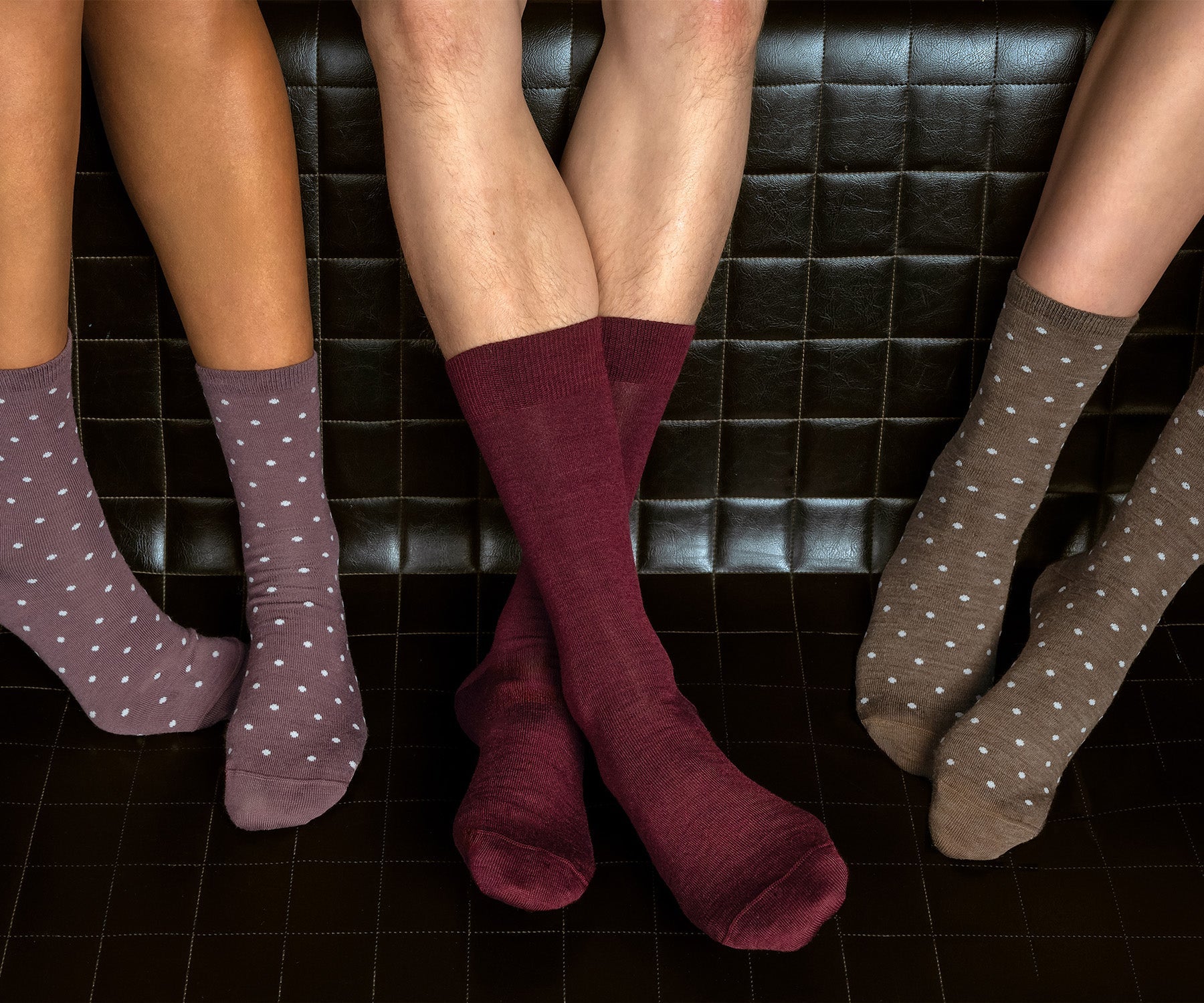You've probably felt the frost and cold creeping up your feet and wondered why your expensive shoes don't keep you warm enough?
It's not just about the footwear at this point. Even good footwear can cause blisters, chafing and be uncomfortable and cold if your sock choice isn't right. The sock plays a surprisingly important role in the functioning of the shoe.
We Finns are used to wearing cotton socks, but cotton is a poorer choice for the cold weather conditions we live in for much of the year. Perhaps sometimes you will slip a woven wool sock into a cotton sock, and your toes will still crinkle from the frost. Why is cotton not the best choice for socks? Because, cotton absorbs a lot of moisture, doesn't heat up at all and dries slowly. As a result, cotton socks that are against the skin do not warm up enough and the cold is more likely to strike, and chafing and crevices are likely to occur as the damp sock rubs against the leathery skin of the footwear.
Merino wool socks are perceived as being specifically for frosty weather, but often only for winter sports or outdoor activities. Merino wool super properties and outperforms cotton whatever the conditions, making it a stunning choice for everyday use.
Merino wool adapts to the temperature of your skin, warming it in cold weather or cooling it in hot weather. It is a breathable material that warms, wicks moisture away from the skin and is naturally antibacterial. Merino wool is soft and non-itchy, making it ideal for more sensitive skin.
The performance of the footwear often depends on the sock. But, how do you choose the right sock for the right footwear and the right need?
We've made this choice easier by introducing thickness and thermal value icons for products.
The thickness icon describes the physical thickness of the product. You can also think of it in terms of footwear; the lighter the shoe, the lighter the sock. The heavier the shoe, the thicker the sock / combination of socks.
The thermal value similarly describes the amount of merino wool in the product. Products with no merino wool at all have a thermal value of 1 and socks with more than 60% merino wool have a thermal value of 5.
Footwear with a technical winter shoe with a membrane:
Various types of moisture barrier membranes are common in winter footwear and footwear for winter sports. These shoes are usually relatively snug-fitting, so the sock cannot be too thick to allow room for movement and sufficient air space for the toes. Typically, the shoe has a slightly thicker sole, is unlined or thin-lined and has a technical membrane to prevent moisture from entering the shoe. In this case, the sock should be relatively thin but warm.
We recommend Light or Medium thickness for these shoes. The thermal value should be at least value 3.




